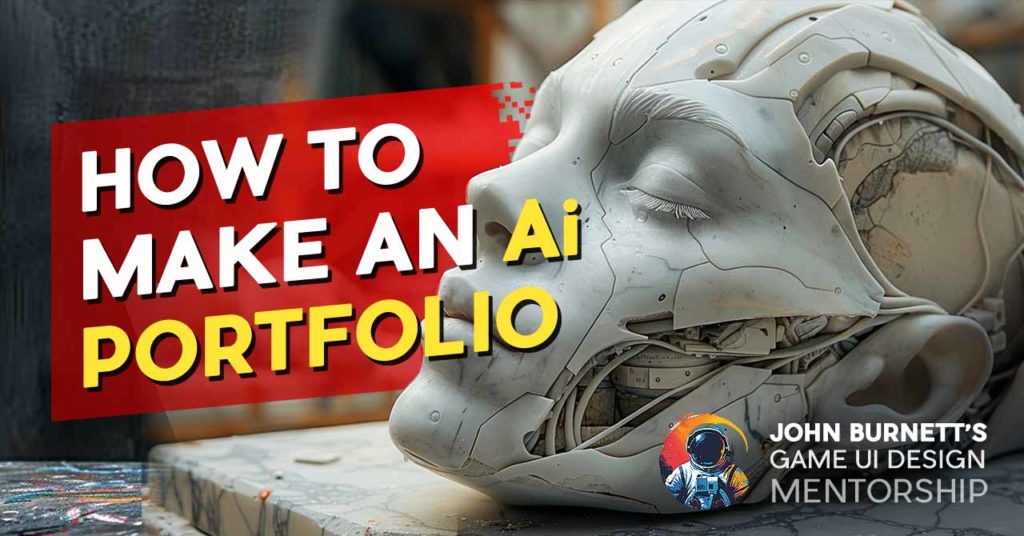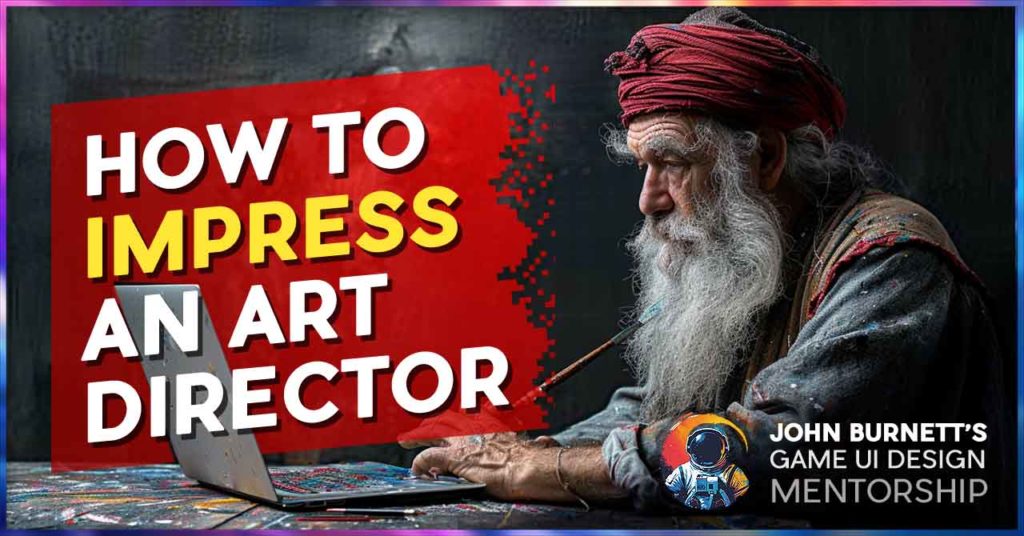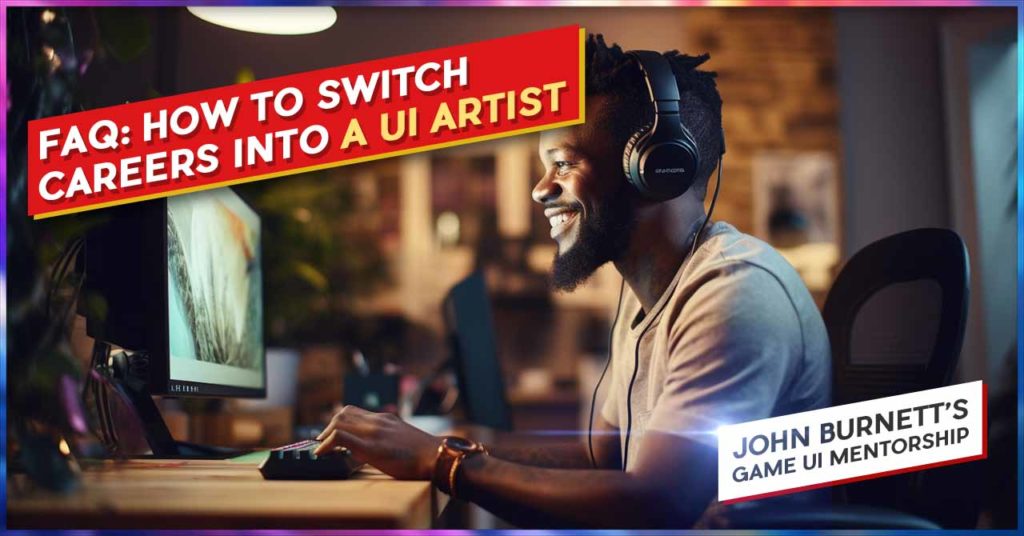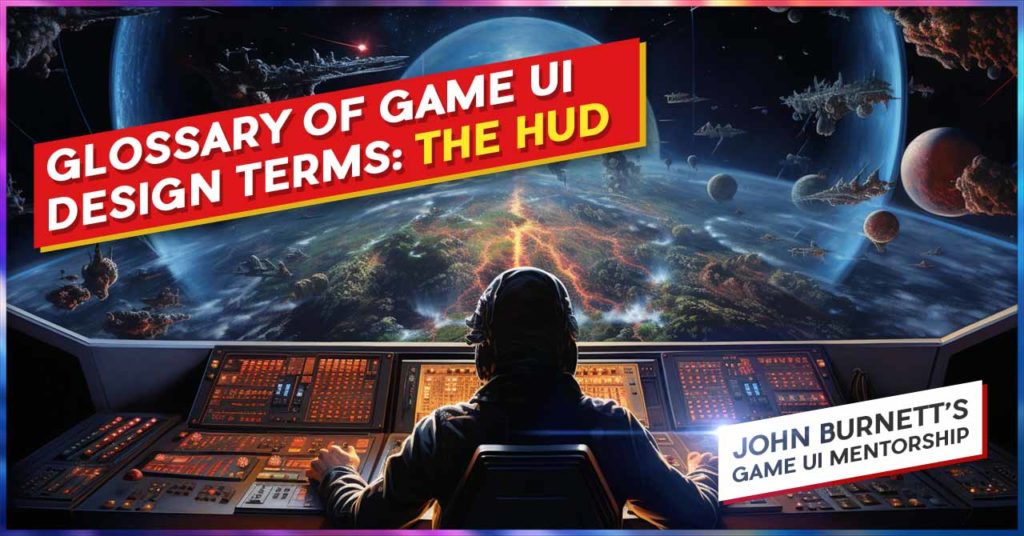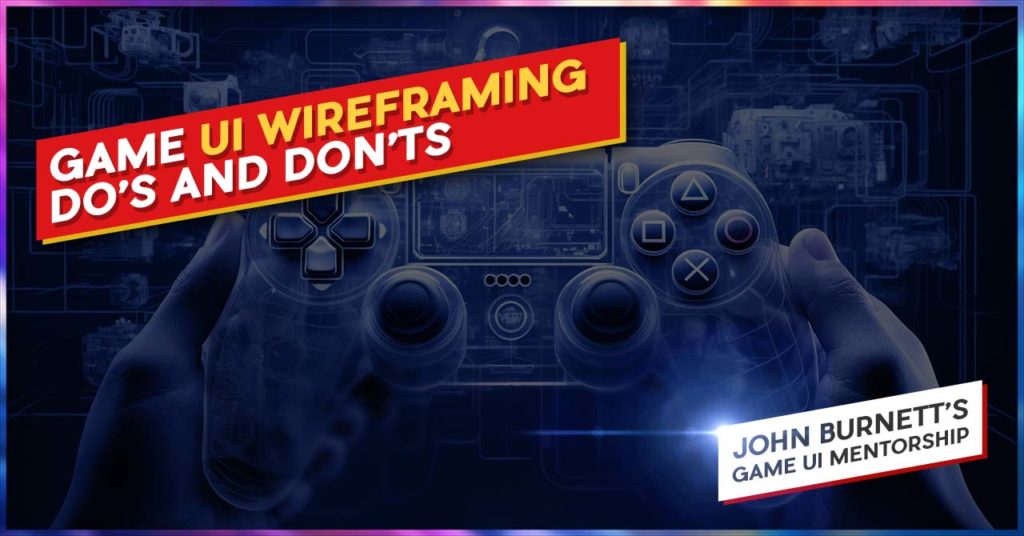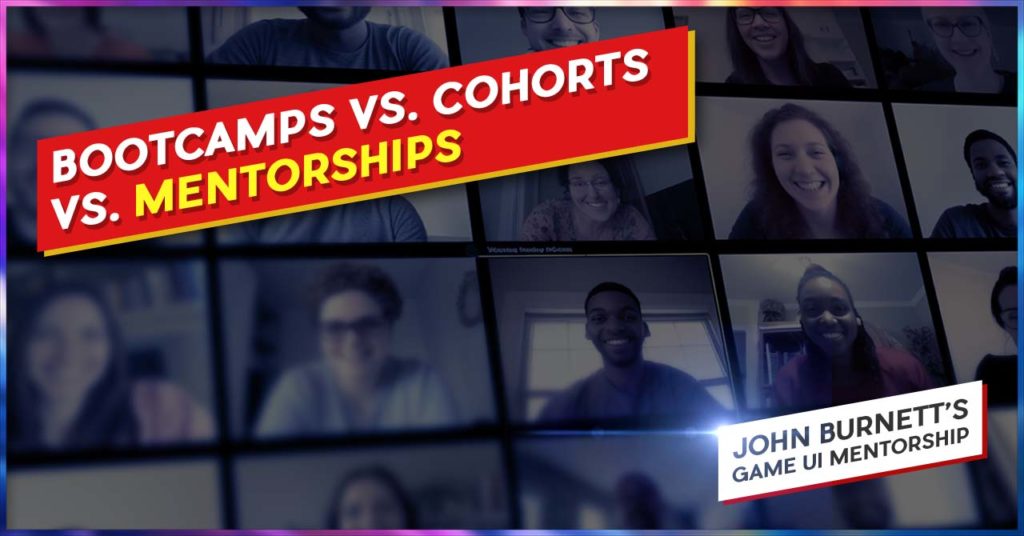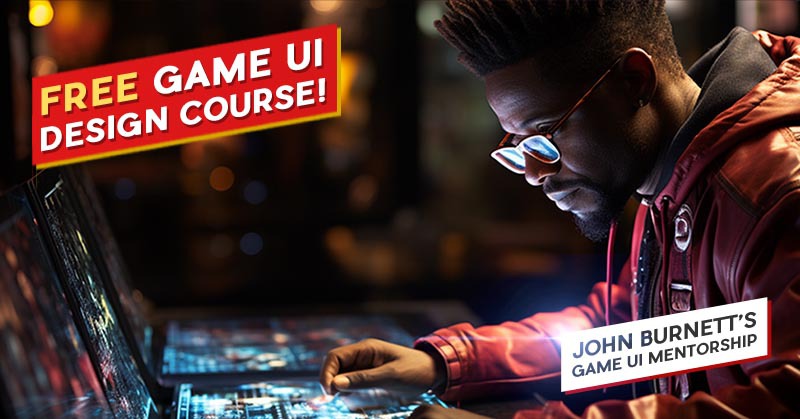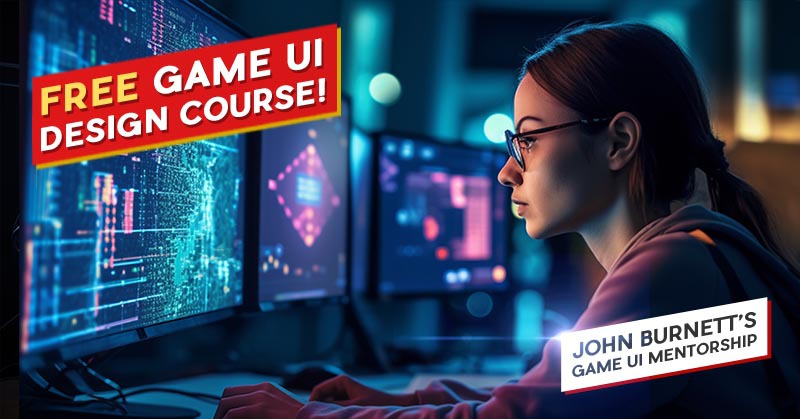Learn Game UI Design: Bootcamps, Cohorts, and Mentorships
RESOURCES TO LEARN UI/UX DESIGN FOR GAMES
LEARN GAME UI DESIGN: BOOTCAMPS, COHORTS, AND MENTORSHIPS
 By John “TheWingless” Burnett
By John “TheWingless” Burnett
Game Art Director, Senior UI Artist, Remote Game UI Mentor
Need 1-on-1 help with your Game UI Portfolio? Join my exclusive Game UI Design Course!
LEARN GAME UI DESIGN: BOOTCAMPS, COHORTS, AND MENTORSHIPS
RESOURCES TO LEARN UI/UX DESIGN FOR GAMES
Embarking on a journey in UI design is an exciting venture, but the multitude of learning options available can be overwhelming. Among the popular choices are UI design bootcamps, cohorts, and mentorships, each offering a unique approach to skill acquisition. In this comprehensive guide, we’ll delve into the pros and cons of UI design bootcamps, cohorts, and mentorships to help you make an informed decision about the learning path that best suits your needs and aspirations.
–
–
–
GAME UI DESIGN BOOTCAMPS:
Buzzcuts, jumping over tires, and pull-ups while the Sargent screams at you. Okay, not that Bootcamp, but the same level of intensity and mental agility. Bootcamps are like super-focused training programs where you dive in headfirst. This can mean a standard canned curriculum, smaller projects, or a more buffet-style education. It’s a bit intense and short, but by the end, you’ve got quite a few practical skills.
GAME UI BOOTCAMP PROS:
- Structured Learning Path:
- Bootcamps typically offer a structured curriculum that guides students through a comprehensive learning path, covering essential UI design principles and tools.
- Time Efficiency:
- Designed to be intensive and immersive, bootcamps are known for their short duration, making them an efficient option for individuals looking to upskill quickly.
- Project-Based Learning:
- Some (not all) bootcamps emphasize hands-on, project-based learning, allowing students to apply theoretical concepts in real-world scenarios and build a portfolio.
- Community Engagement:
- Bootcamps often foster a sense of community among participants, facilitating collaboration and networking opportunities.
GAME UI BOOTCAMP CONS:
- Intensive Pace:
- The fast-paced nature of bootcamps can be challenging for some learners, especially those who prefer a more gradual and in-depth exploration of UI design concepts. If you’re already working a job, or have family to take care of, this may be nonviable!
- Limited Flexibility:
- Due to their fixed schedules and curricula, bootcamps might not be suitable for those who require a more flexible learning environment. For Apps and Web, a bog-standard curriculum may be fine. But for game design, it’s a major disadvantage.
- Cost Consideration:
- While bootcamps provide valuable skills, they can be relatively expensive compared to other learning options, making them less accessible for some individuals.
GAME UI COHORTS FOR UI DESIGN:
Think of a UI design cohort like a team of buddies (or perfect strangers, depending on the vibe of the room) learning together. You’re part of a group following a set plan to master UI design. It’s not as speedy as a bootcamp, but you get to share ideas, work on projects with your cohort pals, and learn at a steady pace.
GAME UI COHORT PROS:
- Collaborative Learning:
- Cohorts often emphasize collaborative learning, allowing students to engage in discussions, share insights, and work on group projects.
- Longer Duration:
- Compared to bootcamps, cohorts may have a longer duration, providing a more extended period for deepening understanding and skill development.
- Moderate Pace:
- Cohorts generally offer a more moderate pace of learning, accommodating individuals who prefer a steady and in-depth exploration of UI design concepts.
- Diverse Perspectives:
- Learning within a cohort introduces students to diverse perspectives and experiences, enriching the overall educational experience.
GAME UI COHORT CONS:
- Limited Individual Attention:
- The collaborative nature of cohorts may result in limited one-on-one attention from instructors, potentially affecting the level of personalized guidance for individual learning needs. This can be a dealbreaker if you feel especially lonely and aimless making a Portfolio by yourself.
- Fixed Schedule:
- Similar to bootcamps, cohorts often follow a fixed schedule, which may be challenging for those with time constraints or irregular availability. So if you get sick or have other real-life considerations, well, that’s your money down the drain.

MENTORSHIPS IN GAME UI DESIGN:
Now, picture having a wise UI design guru by your side, floating in the air, legs in a lotus-position. A mentor is someone experienced in UI design, and they guide you personally, with all their towering expertise and care focused exclusively on you. Often you create capstone or longform projects while getting real-world tips and advice to help you grow as a UI designer from somebody who has already walked the path.
GAME UI MENTORSHIP PROS:
–
- Personalized Guidance:
- Mentorships provide a highly personalized learning experience, with mentors offering individualized guidance based on the mentee’s specific strengths, weaknesses, and goals. Mentors are often incredibly empathetic and patient, giving you the opposite experience of a Bootcamp or Cohort in terms of care and attention.
- Flexible Schedule:
- Mentorships often offer greater flexibility, allowing mentees to schedule sessions according to their availability. Feeling sick? Something came up? Dog got bit? Just let the Mentor know and everything is moved around.
- Real-world Insight:
- Mentors, often seasoned professionals, provide valuable real-world insights, bridging the gap between theoretical learning and practical application. Now, there’s a charming expression that goes like this: “Those who can’t, teach.” – which is only partially true. The people at the tippy-top of their game are also teaching!
- Networking Opportunities:
- Mentorships may provide networking opportunities, with mentors often connecting mentees to industry professionals and potential employers. Certainly, they can connect you to other Mentees.
- Better Portfolios
- Mentorships often tailor their entire structure around your interests and skillsets, meaning a kaledioscopic array of portfolio pieces in their class. Cohorts and Bootcamps tend to have 1 singular project in mind, so when you’re done, everyone in class has the same project, same genre, same methodology… robbing you of your ability to stand out – even among your own classmates!
- Empathy & Care
- Because of the 1-to-1 nature of a Mentorship, the level of attention is obviously much higher. But that has a cascading effect: the time, care, empathy and patience all weave together to make an incredibly safe space to learn and grow. This is especially true for people who have been laid off – they are coming from a pretty vulnerable place, and they need the sensitivity that just doesn’t come from a crowded classroom.
GAME UI MENTORSHIP CONS:
- Potentially Higher Cost:
- Mentorships can be more expensive than bootcamps or cohorts, particularly if working with highly experienced professionals, making them less accessible for some learners.
- Dependency on Mentor Availability:
- The availability of the mentor can be a potential constraint, and if the mentor is not readily accessible, it may impact the pace of learning.
CONCLUSION
Choosing the right path in UI design—whether through a bootcamp, cohort, or mentorship—requires careful consideration of your learning style, preferences, and career goals. Each option comes with its unique set of advantages and disadvantages. Bootcamps offer a structured and immersive experience, cohorts promote collaboration and a more moderate pace, while mentorships provide personalized guidance and real-world insights.
Ultimately, the key is to align your choice with your individual needs and aspirations. Consider factors such as your preferred learning pace, the depth of engagement you seek, and the level of personalization required. Whichever path you choose, the world of UI design awaits, and with the right learning approach, you can unlock a fulfilling and successful career in this dynamic and ever-evolving field.



